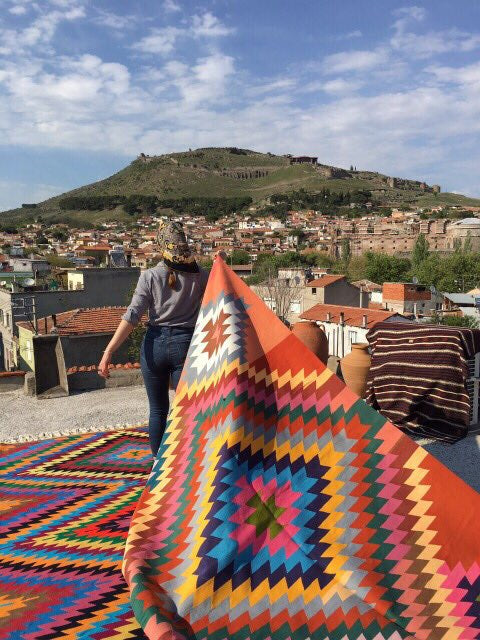
The history of Bergama carpets traces back to ancient times, where the art of carpet weaving flourished in the Anatolian region. Bergama, known in antiquity as Pergamon, was a hub of cultural exchange and artistic innovation, attracting skilled artisans and traders from far and wide. It was within this vibrant tapestry of culture and creativity that the tradition of Bergama carpet weaving was born.
What sets Bergama carpets apart is the meticulous craftsmanship and time-honored techniques employed in their creation. Skilled weavers painstakingly hand-knot each carpet using high-quality wool sourced from local sheep, imbuing every piece with a sense of authenticity and durability. The distinctive designs of Bergama carpets often feature geometric motifs, stylized floral patterns, and intricate medallions, reflecting the region's artistic heritage and cultural influences
Beyond their aesthetic beauty, Bergama carpets hold immense cultural significance within Turkish society. Historically, these carpets served as symbols of status and wealth, adorning the homes of royalty, nobility, and affluent merchants. Today, they continue to be cherished as treasured heirlooms passed down through generations, evoking a sense of pride and nostalgia for their owners.
In an era marked by mass production and industrialization, the art of handmade carpet weaving faces numerous challenges. However, dedicated artisans and enthusiasts are working tirelessly to preserve the tradition of Bergama carpet weaving, ensuring that this timeless craft continues to thrive for generations to come. By supporting authentic handmade Bergama carpets, we not only adorn our homes with exquisite works of art but also honor the legacy of craftsmanship and culture that they represent.
Bergama carpets stand as a testament to the enduring legacy of Turkish carpet weaving, weaving together threads of history, craftsmanship, and cultural heritage. As we marvel at their beauty and intricacy, let us also reflect on the timeless values they embody – tradition, quality, and the timeless allure of handmade artistry.


0 comments